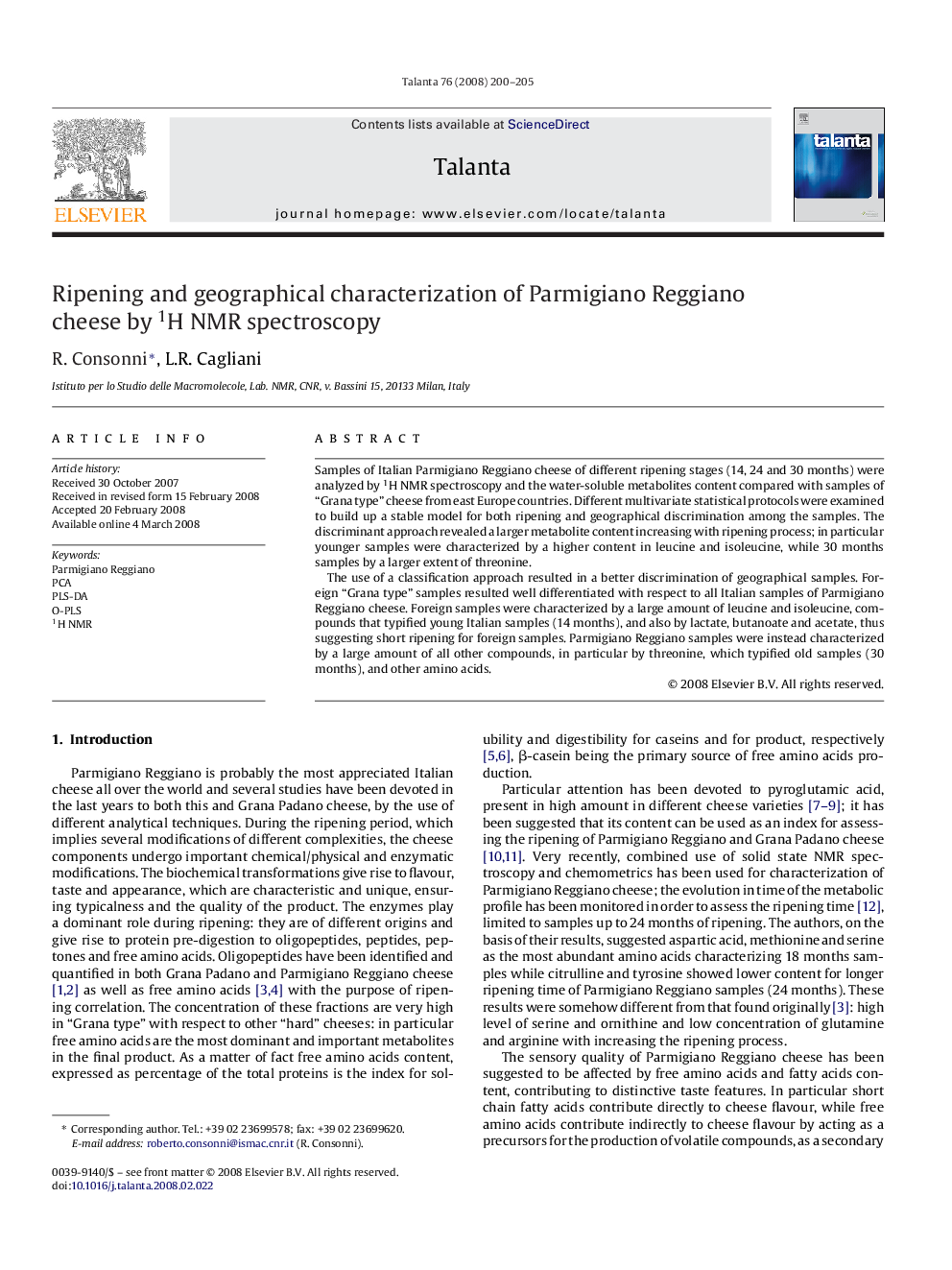| Article ID | Journal | Published Year | Pages | File Type |
|---|---|---|---|---|
| 1243983 | Talanta | 2008 | 6 Pages |
Samples of Italian Parmigiano Reggiano cheese of different ripening stages (14, 24 and 30 months) were analyzed by 1H NMR spectroscopy and the water-soluble metabolites content compared with samples of “Grana type” cheese from east Europe countries. Different multivariate statistical protocols were examined to build up a stable model for both ripening and geographical discrimination among the samples. The discriminant approach revealed a larger metabolite content increasing with ripening process; in particular younger samples were characterized by a higher content in leucine and isoleucine, while 30 months samples by a larger extent of threonine.The use of a classification approach resulted in a better discrimination of geographical samples. Foreign “Grana type” samples resulted well differentiated with respect to all Italian samples of Parmigiano Reggiano cheese. Foreign samples were characterized by a large amount of leucine and isoleucine, compounds that typified young Italian samples (14 months), and also by lactate, butanoate and acetate, thus suggesting short ripening for foreign samples. Parmigiano Reggiano samples were instead characterized by a large amount of all other compounds, in particular by threonine, which typified old samples (30 months), and other amino acids.
